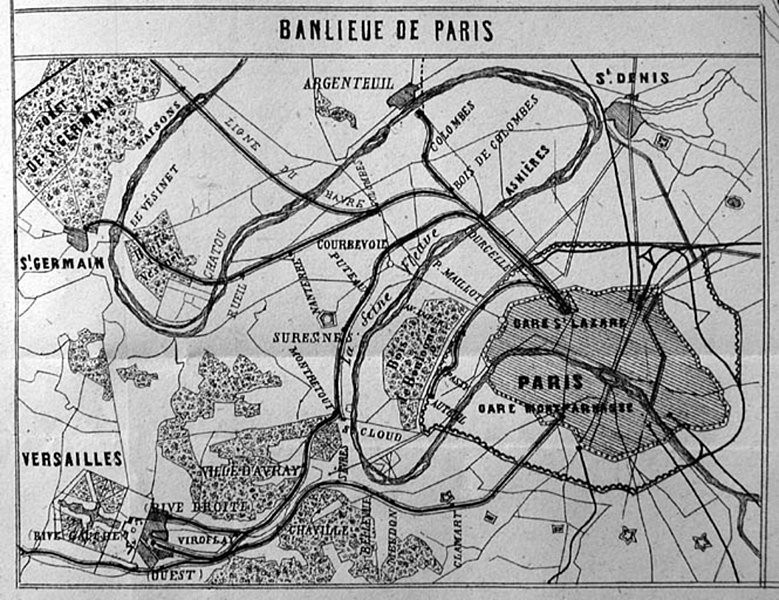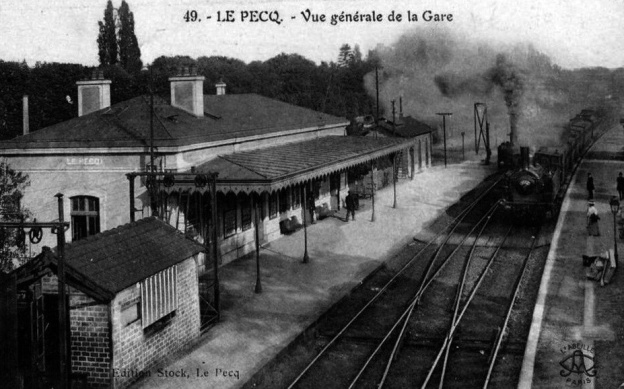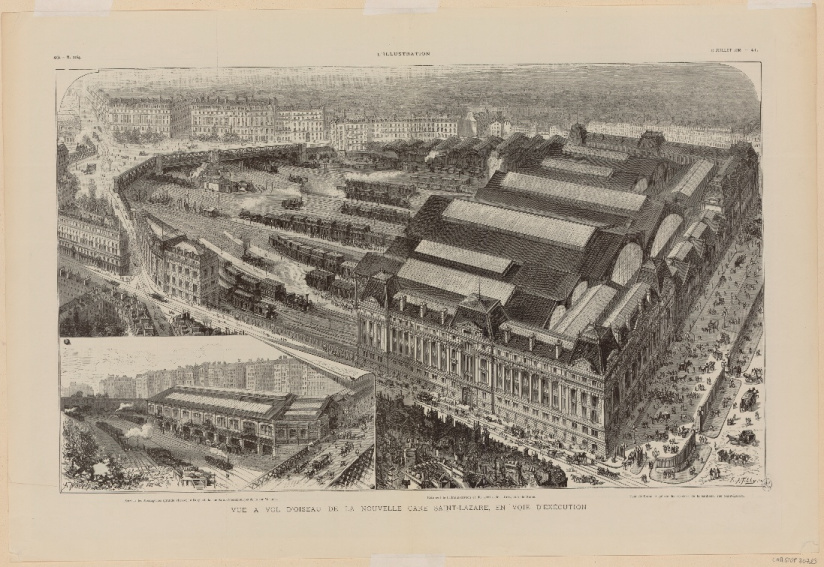On Saturday August 26, 1837, the first railroad line to run from Paris was inaugurated. Linking the 8th arrondissement of Paris to the Pecq station in the Yvelines, this double-track railroad line, some twenty kilometers long, was also the first in France to be built solely for passenger transport. This episode marks the beginning ofFrance's railway epic.
Until then, France's small railroad lines had been reserved for transporting goods, coal and ore, particularly in the coalfields of the Loire , where the first railway lines were built in 1827, by order of King Louis XVIII.
But while England had been experimenting with the steam locomotive since 1804, and opened its first passenger line between Stockton and Darlington in 1825, France lagged behind with its horse-drawn wagons from another era. In fact, it wasn't until 1831 that the Houillères de la Loire company agreed totake passengers on board its trains, but they had to travel in wagons reserved for coal.
The brothers Emile and Isaac Pereire, two French businessmen, set their sights on opening a line entirely dedicated to passenger transport from the capital. Given the economic success of the Saint-Etienne-Lyon line, opened in 1830, and understanding the importance of the emergence of this new means of transport, the French government agreed to cede the concession for the future line to the two bankers in 1835. The Compagnie du chemin de fer de Paris à Saint-Germain was founded at the same time.
It was decided that this new rail line should link Paris to Saint-Germain-en-Laye, a popular strolling destination for Parisians and close enough to the capital to limit investment and make this first section the first step towards the creation of the future "grande ligne de l'Ouest" linking Paris to Rouen.
Originally, the arrival station for this brand-new line was at Le Pecq, as the locomotives of the time were unable to climb the hill leading to Saint-Germain-en-Laye. Thedeparture pier is on the Place de l'Europe in Paris's 8th arrondissement.
On August 24, 1837, after two years of work financed by the Rotschild family, the Paris-Le Pecq railroad line was inaugurated with great fanfare in the presence of Queen Marie-Amélie, wife of King Louis-Philippe 1st. The sovereign was not present, dissuaded by advisors concerned about the arrival of steam engines and the impact of speed on the human body, who advised him against taking part in this first journey, which passed partly through a tunnel under the Batignolles hill.
To the applause of the crowd and accompanied by military marches, the first train made the Paris-Le Pecq journey in 27 minutes. The following day, August 26, 1837, the line opened to the public and was a resounding success. On its first day of operation, 18,000 people climbed aboard, divided into 3 classes: the luxurious 1st class with its chic carriages, the bourgeois 2nd class, and the bare, uncovered 3rd class.
In 1847, the Le Pecq station was demolished and the line finally extended to Saint-Germain-en-Laye, thanks to an ingenious and innovative "atmospheric" system- a piston slides through a slotted tube that closes again after passing through it - making it easier to climb the hill leading to the destination. Meanwhile, several intermediate stops were added: Chatou and Nanterre in October 1837, Asnières in 1838, then Colombes and Rueil in 1843 and 1844.
At the start of the line in Paris, thepier below the Place de l'Europe became too small, and was demolished when the main Paris-Rouen line was opened . In 1843, the tracks were extended southwards by 300 meters, and a new station was built: Gare Saint-Lazare.
How about taking advantage of the Journées du Patrimoine 2021 (Heritage Days 2021 ) to discover the Gare Saint-Lazare backstage on September 18 and 19, and imagine yourself reliving the day of August 26, 1837? Alternatively,Harry Potter fans can climb aboard the Hogwarts Express on August 28 and 29. See you on track 9¾ at Gare Saint-Lazare!
Location
Saint-Lazare station
13 Rue d'Amsterdam
75008 Paris 8
More information
Iconography: Map © Compagnie des chemins de fer de l'Ouest Bird's-eye view of the new Gare Saint-Lazare, under construction, Emile Tilly, Musée Carnavalet



























